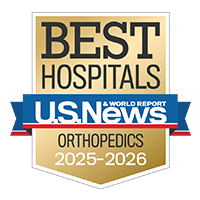Osteochondritis dissecans

Overview
The high-impact or repetitive stresses placed on the body from some sports can sometimes cause damage to the bone and cartilage, most often in the knee or elbow. This can lead to separation of a fragment of cartilage and bone from the rest of the joint. Sometimes the fragment stays in place; sometimes it can break off and fall into the joint space. This condition, usually associated with traumatic injury or overuse, is called osteochondritis dissecans (OCD). It's most common in children and adolescents.
While the underlying cause of OCD is not fully understood, it can be a cause of knee and elbow pain in young athletes. OCD of the knee typically occurs in sports that involve hard landings, such as football, soccer and gymnastics. OCD of the elbow can result from sports with repeated overhead throwing, such as baseball, or that require repetitive weight-bearing by the arms, such as gymnastics.
Symptoms of OCD can resemble those of other overuse injuries. Often it initially presents as pain with activity. But because a fragment of bone and cartilage can break loose and get caught in the joint causing damage, it's important to see a doctor promptly for diagnosis and treatment.
Our approach to osteochondritis dissecans
Our team includes orthopedic surgeons, primary care sports medicine doctors, and physical therapists who are experienced in evaluating and treating conditions such as osteochondritis dissecans. These specialists work together to develop the best treatment plan to relieve pain and restore mobility so patients can return to their normal activities.
Awards & recognition
-

Best in Northern California and No. 6 in the nation for orthopedic care
-

Among the top hospitals in the nation
Signs and symptoms
The first symptom of OCD may be a pain in a joint, sometimes associated with a popping sensation. If the aggravating activity continues, the joint may become significantly inflamed and damaged, leading to other symptoms. These may include:
- Soreness or tenderness at the joint
- Swelling or stiffness around the joint
- Difficulty fully straightening the arm or leg
- Feeling as if the joint is catching or locking
- Fluid collecting around the joint
Diagnosis
To determine whether you have OCD, the doctor will first perform a physical exam, checking for pain along the affected joint. But imaging tests are usually needed to confirm the diagnosis. These may include:
- X-rays. These images can show abnormalities in the joint's bones but won't reveal soft tissue damage. If X-rays appear normal yet your symptoms continue, additional tests may be ordered.
- Magnetic resonance imaging (MRI). An MRI scan can provide detailed images of bones, cartilage and other soft tissues.
- Computerized tomography (CT) scan. This technique combines X-rays taken from various angles to produce detailed cross-sectional images that help doctors pinpoint the location of loose fragments within a joint.
Treatment
If the piece of bone hasn't broken loose from the joint, the first line of treatment is usually nonsurgical. The plan will likely include a rest from high-impact activities that stress the joint; icing the injured area; and taking nonsteroidal anti-inflammatory drugs (NSAIDs) for pain, such as ibuprofen (Advil, Motrin). You may need to use crutches or wear a brace for a few weeks to reduce stress on the joint. Physical therapy may be ordered to strengthen the muscles that support the joint. During this period of rest and recovery, you will need to be closely monitored to check on the healing of the bone fragment.
You may need surgery under the following circumstances:
- There are loose fragments of bone and cartilage in the joint or the damaged area of the joint is in danger of breaking loose.
- The injured area hasn't healed after four to six months of rest and physical therapy.
- Your symptoms are persisting.
Surgeons have a variety of procedures for repairing osteochondritis dissecans. Your surgeon will choose the best technique based on the size and stage of the injury and other factors.
UCSF Health medical specialists have reviewed this information. It is for educational purposes only and is not intended to replace the advice of your doctor or other health care provider. We encourage you to discuss any questions or concerns you may have with your provider.









